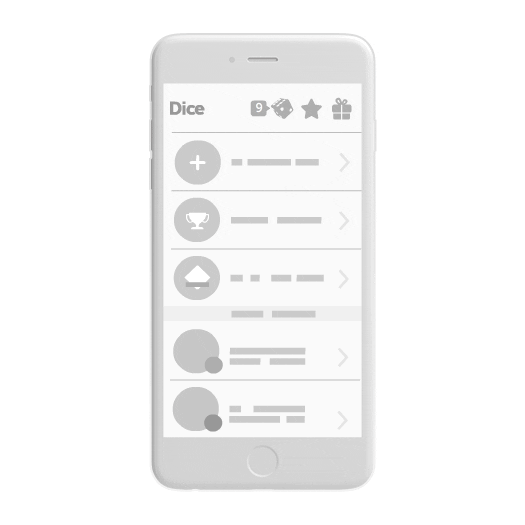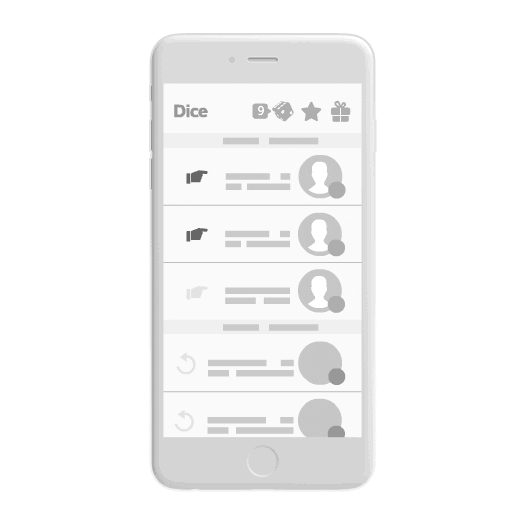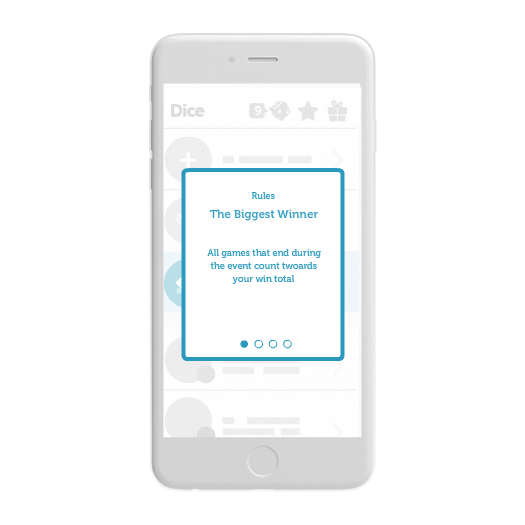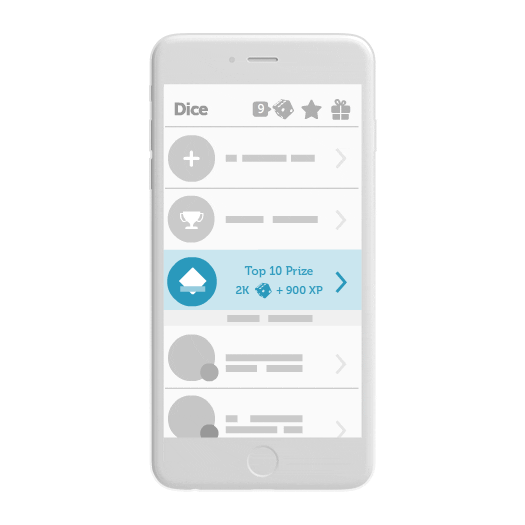Single-Player Events for a Multiplayer Game - Dice with Buddies
CASE STUDY: Dice with Buddies
YEAR: 2014–2015
PROBLEM
Scopely's flagship mobile product, Dice with Buddies, has always been a multiplayer experience. Since the experience is asynchronous, users must wait to be paired with another player, which results in idle time.
ROLE
Designer
RESPONSIBILITIES
UX Design: wireframe flows, low fidelity prototypes, usability testing
UI Design: interaction, and motion design, low fidelity micro-interaction libraries, technical documentation, presentation
Design Exploration
Paper Wireframes
Digital Wireframes
Low Fidelity Mocks
Micro-interactions Library
Based on the UXR team’s foundational research and the PM’s competitive analyses, the team decided that the best course of action was to provide a single-player event for this mostly multiplayer game. I worked on an iterative design to create paper wireframes and digital wireframes for a recurring event experience and a low-fidelity, micro-interactions library to accompany it.
The challenge was that the feature’s user flow must be simple to navigate, consistent with the rest of the app, and encourage user interaction.
Low Fidelity Mocks
Micro-Interactions Library
Takeaways and Success
The team launched the feature, which resulted in a significant increase in the number of daily active users. Beyond current users' play patterns, there was also a significant increase in long-term retention. To keep users engaged, a specialized live-operations team created new periodic events. Scopely's other apps, such as Yahtzee with Buddies, quickly adopted the single-player event experience due to the positive engagement.
The micro-interaction library introduced in the design process helped ensure the app's motion design was consistent. This enabled behavior to be taught through gestures as well as continuous feedback. System feedback was prioritized and output was amplified thanks to the light interactions. I was presented with an Innovation Impact Award from Scopely for “creating a process in the design phase that makes product development more efficient and effective.”









